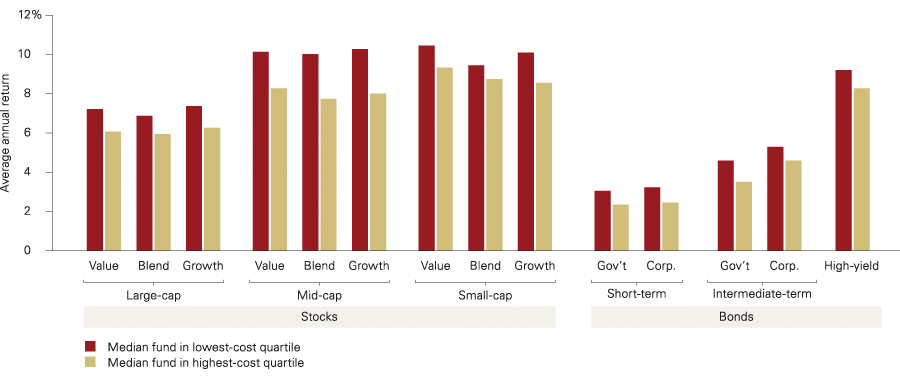Active ETFs Higher Cost Versus Added Value
Post on: 7 Апрель, 2015 No Comment

The exchange-traded fund universe has officially been infiltrated by active managers. Once exclusively hailed as a type of index-based, passive vehicle, ETFs are now exploring the active side of portfolio management. There are many ETFs to choose from, and the choices no longer only appeal to traditional indexers.
Active ETFs combine the benefits of ETF investing with the investment process of active management. Despite the strong track record that indexing strategies have demonstrated, many investors are simply not content to settle for average returns. The ETF structure, by design, provides investors with lower expenses, tax efficiency, fund transparency, liquidity and trading flexibility. Until active ETFs came to market, most ETFs were designed to track a specific index or industry sector.
Active ETFs are managed by investment teams relying on traditional portfolio management methods (research, managed risk, active trading) with the specific goal of outperforming a relative benchmark. Of course, whether you choose to believe that is possible on a consistent basis is another matter altogether. (For more insight, read Active Share Measures Active Management and Is Your Portfolio Beating Its Benchmark ? )
The Unveiling
Active ETFs made their official debut in March 2008 with the launch of Bear Stearns Current Yield (de-listed in October 2008), although you could argue that some of the existing passive products bear strong resemblance to active strategies. There is no doubt that providers of these actively managed ETFs are banking on active management as a way to attract new investors and compete more effectively with mutual funds in a very crowded marketplace.
Comparing Active ETFs
Actively Managed Funds
There are many differences that set active ETFs apart from actively managed funds. Among them are the tax advantages. Mutual funds use a highest in, first out method of tax treatment and portfolio tax management. This method often creates embedded, unrealized gains, which can lead to eventual taxable distributions to shareholders. Active ETFs, on the other hand, endorse a lowest in, first out strategy that may better mitigate or avoid capital gains distributions via in-kind tax management strategies. With this approach, the ETF fund manager can purge the lowest basis stocks via in-kind stock transfers through the creation and redemption process. This helps systematically reduce the tax exposure for investors.
Special Offer: Drink up huge profits with Jim Oberweis. He’s the guy who had subscribers into Baidu at $8 and who rode Hansen Natural (maker of Monster drinks) for a 1,200% gain. Click here for four stocks to buy and sell now…in the Oberweis Report .
Additionally, because ETFs report their holdings on a daily basis, active ETFs will provide far greater transparency than funds that do not disclose their holdings as frequently, such as once per quarter. Daily reporting of assets is necessary to facilitate the creation and redemption of fund shares, a process that helps to keep the fund’s price in line with its net asset value (NAV). Finally, active ETFs have dramatically lower expenses as compared to the average actively managed mutual fund, but of course, this is largely determined by the asset class being represented in the fund. For example, domestic large cap funds tend to have lower expenses than foreign asset classes in less developed markets.
Passively Managed ETFs
From an investment strategy standpoint, traditional exchange-traded funds are designed to track indexes. Active ETFs, by contrast, are designed to beat an index. Both passive and active ETFs attempt to minimize shareholders costs, but actively managed ETFs might not be as tax efficient as ETFs that track indexes due to increased turnover. Still, active ETFs, as previously discussed, are likely more tax efficient than their mutual fund counterparts. (For more on this, read Mutual Fund Or ETF: Which Is Right For You? )
Active Disadvantages
As actively managed ETFs multiply in number, so too can their expenses. We’ve already seen this occur with the existing traditional ETFs in the market. This erodes one if their greatest advantages: cost savings. Furthermore, active managers may be less inclined to, or interested in, adhering to a total transparency policy. If a successful manager is consistently adding alpha to his portfolio, why would he want to show the world (on a daily basis) how he did it?
ETFs, both active and passive, allow investors to access global markets at a reasonable cost. The tax efficiency and transparency benefits are also obvious. It may take years for active ETFs to proliferate to a size that competes head-to-head with actively managed funds in sheer numbers and choices. But, in terms of what type of ETF you decide to employ (passive or active) the decision will ultimately boil down to one issue: do you believe that active management adds enough value to justify investing outside of an index? That verdict rests solely on the investor.














